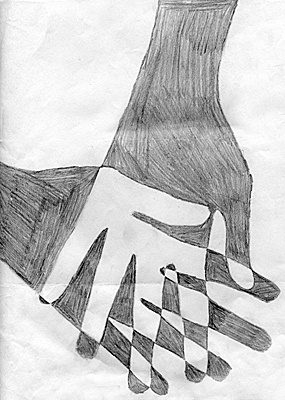All Nonfiction
- Bullying
- Books
- Academic
- Author Interviews
- Celebrity interviews
- College Articles
- College Essays
- Educator of the Year
- Heroes
- Interviews
- Memoir
- Personal Experience
- Sports
- Travel & Culture
All Opinions
- Bullying
- Current Events / Politics
- Discrimination
- Drugs / Alcohol / Smoking
- Entertainment / Celebrities
- Environment
- Love / Relationships
- Movies / Music / TV
- Pop Culture / Trends
- School / College
- Social Issues / Civics
- Spirituality / Religion
- Sports / Hobbies
All Hot Topics
- Bullying
- Community Service
- Environment
- Health
- Letters to the Editor
- Pride & Prejudice
- What Matters
- Back
Summer Guide
- Program Links
- Program Reviews
- Back
College Guide
- College Links
- College Reviews
- College Essays
- College Articles
- Back
Between Sides -- Light or Dark?
In books, in video games, movies, religion, mythology -- every epic story ever told -- the issue of light versus darkness is disputed. It is a great battle fought by two clear sides, with a clear winner, who is usually the "light" side, or the "good guys". But what if we switched our perspective around?
When you hear what's written by the light side: "A boy named X, with a great power thrust upon him, struggles over the hurdles and obstacles thrown in his way by his arch enemy, Y, and strives to protect his world and save his best friend, who has been taken over by the power of the darkness. Meanwhile, Y continues his murderous ways, finding new recruits and converting people into his followers." How heroic! How brave! Go X!
However, what if we flipped sides, and heard it from the other side's point of view? "A man, Y, struggles to rebuild the world for the better after it becomes corrupted with an imbalance of forces. He recognizes the need for equal light and darkness, and recognizes the light that shines too brightly. He looks to remedy this by dragging some in to his side, including a boy with a best friend named X. X, crazed with anger and revenge, blinded by the light, now hounds Y relentlessly, trying to keep the power on his side and ultimately kills him." Both stories are loaded, and extremely so. In this perspective, the reader pities Y. Why?
The divide between light and dark, even the kind we face in real life, is not a true divide. It is grayscale. There are shades and tones to the good or bad in a person, a character, or action, and cannot always be classified as black and white – no pun intended. An “evil” character might do the wrong thing for the right reasons, and the “good guy” might do the right thing, but for bad reasons. There are also the bad-to-the-bone types, as well as the heroes of pure light, but those hardly ever make an appearance in stories.
So what makes a bad guy, well, bad? The truth: perspective. As illustrated previously, the only thing that makes the wrong side seem wrong is the other side’s perspective. In literature, there is no such thing as a bad man as long as you listen to the right side – or the wrong one. As for real-life applications, let’s take a popular enemy of the public. Say, Hitler. Adolf Hitler is seen as one of the baddest dudes of our time, or any. He killed thousands upon thousands of people, all for his ideals, and we all know it to be twisted. (For the sake of this article, we won’t go into the gruesome details.) Now, if we looked at a country’s military – almost any active country’s military – we’ll find they also have killed thousands and thousands, caused wars, and more gruesome details we won’t discuss. From the other side’s perspective, they are just as grim and brutal.
The food for thought here is, in short, “before calling someone the villain, recognize that you are, too.”

Similar Articles
JOIN THE DISCUSSION
This article has 0 comments.